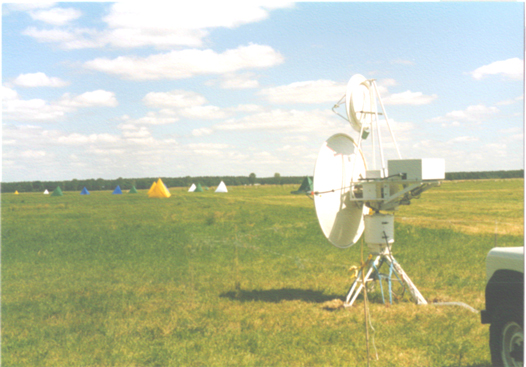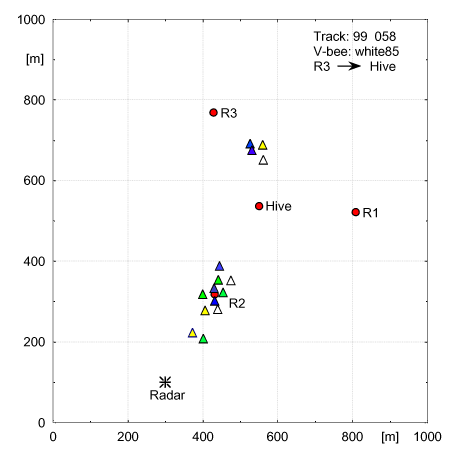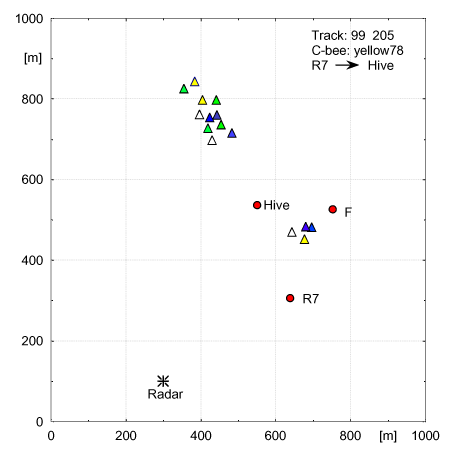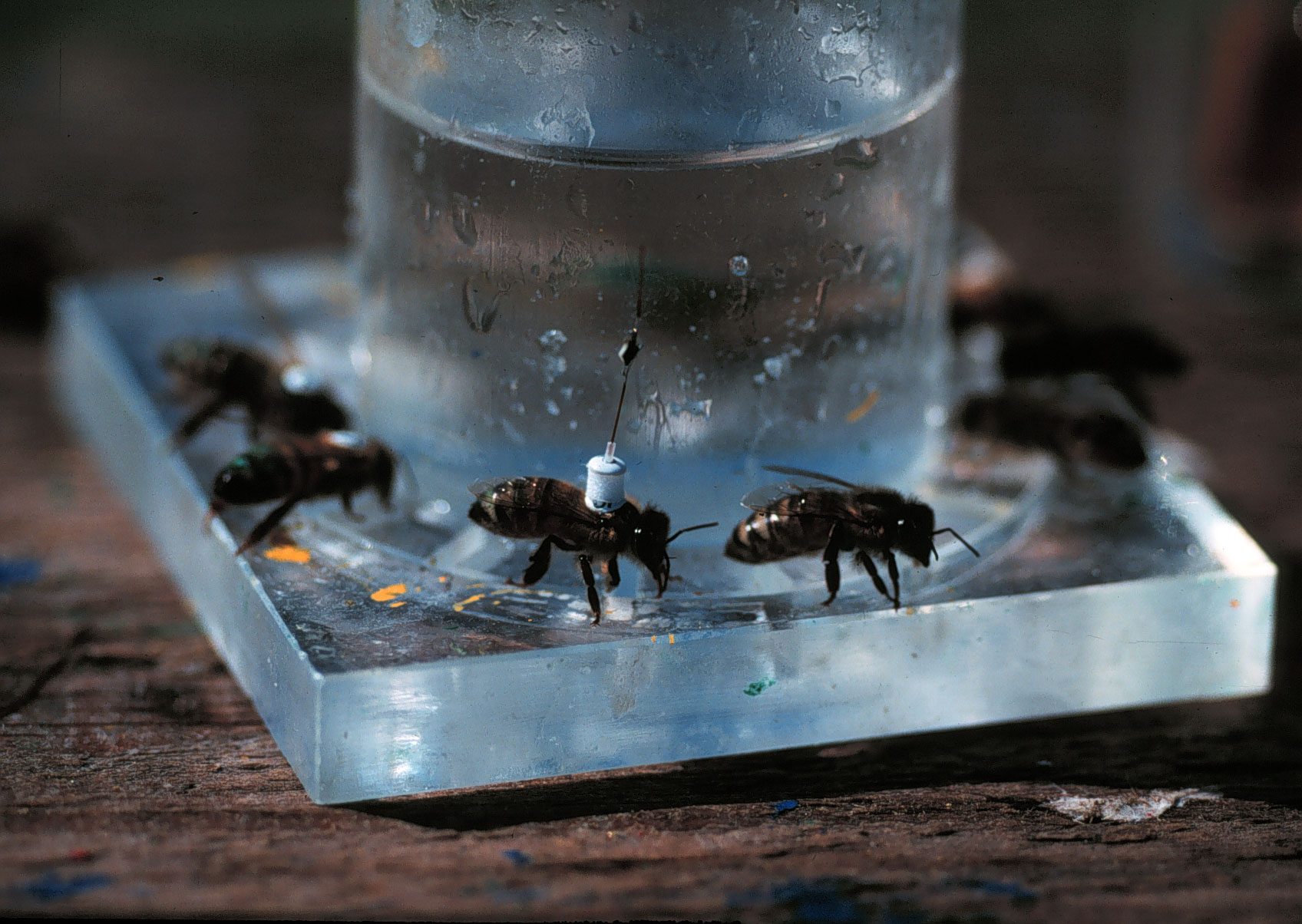will be updated soon !
|

Klein Lüben, Germany 1999 |
Navigation in honeybees: the organization
of large-scale spatial memory.
R. Brandt, U. Greggers, R. Menzel, D.
Reynolds, J. Riley, F. Schaupp, A.-Smith, S.
Stach, N. Stollhoff
We
propose that homing in honeybees(Apis mellifera)is based on at least two forms of memory, a general
landscape memory (GLM) formed during orientation flights and a vector-memory
learned while shuttling between particular feeding sites and the hive.
Method: We used the harmonic radar technique
developed at the NRIRU by Joe Riley's team. Tiny radar transponders attached
to the backs of honeybees allowed us to track the flight paths of the
the insects while foraging. The dipole based transponder reflects the first
harmonic of the radar transmitter frequency, which can be easily
discriminated from typical background radar reflections. The left hand photo
shows the radar setup with the transmitting dish antenna. The receiving dish
antenna on top is tuned to the first harmonic. Both antennae are rotated by
a synchronous motor every three seconds.
|
 |
General
Landscape Memory Flights:
A
hive was placed in the experimental area which lacked natural landmarks.
Bees were trained to collect sucrose solution from a feeder which was
rotated around the hive at a distance of 10m. Once
foraging flights between hive and the rotating feeder were well established, we
captured bees after they had ingested sugar solution, and quickly
transported them individually in a closed box to one of three release
points (R1-R3), about 250m from the hive.The bees were then fitted with a transponder, and released.
Initially
the bees search for the hive and return to the release site often. After
finding landmarks they switch to direct flights towards the hive. We
estimate that the optical cues of the hive are visible at distances of not
more than 30m . This demonstrates that the bees were able to form a
general landscape memory during orientation flights Track
99 058 shows a typical example.
|
 |
Vector Flights:
Bees were trained to collect sucrose solution from a feeder (F) east of
the hive at a distance of 200m. Once
foraging flights between hive and feeder were well established, we
captured bees after they had ingested sugar solution, and quickly
transported them individually in a closed box to one of eight release
points, about 250m from the hive.
The bees were then fitted with a transponder, and released. Track
99 205 shows a typical example where a bee released 250m to the SSE of
the hive (R7) maintained a straight flight to the west for 200m, before
beginning circling flight.
This flight was almost exactly along the feeder-to-hive direction
for its entire length.
Many
bees completed the full length of these flights before starting to search
for their hive, and almost all maintained accurate compensation for
lateral wind drift.
This demonstrates
that the bees do not refer to landscape cues during these return
flights, but instead use the ‘optic flow’ of the ground beneath them,
and their sun compass, to judge both direction and distance.
|
 |
|
|



